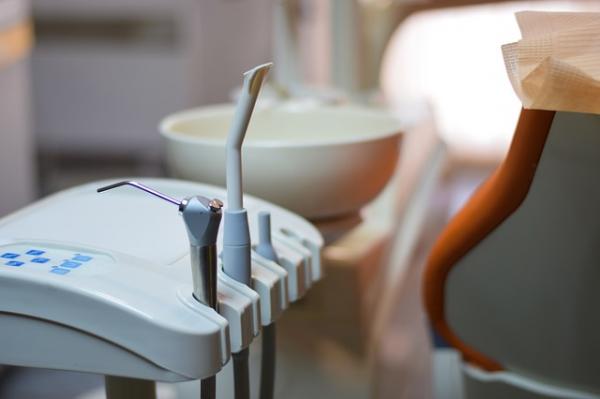Visits to the dentist can be a bit nerve wracking for many people but especially when the visit calls for a dental extraction. No one likes getting teeth pulled and the loud noises coming from the dental tools can make it sound even worse. Dentists are surely aware that many people dread going to the dentist for these reasons, so they do their best to make sure patients are comfortable by communicating with them and walking them through the procedure step by step. Additionally, with the help of medical oxygen, dentists are able to apply the gas with other procedures in order to treat oral issues.
Ozone Gases in The Dental Field
Oxygen is essential to all living things and can also be “energized” to treat various dental issues like gum disease. When Oxygen is “energized”, it can be used in dental practices as an ozone gas. Ozone (O3) is composed of 3 oxygen atoms that work as an alternative therapy used to improve the body’s oxygen intake and is used to disinfect open cuts during dental procedures like root canals. What makes oxygen “energized” are the extra oxygen atom molecules, which help make ozone a helpful gas for both medical and everyday health. When it comes to the earth, the ozone layer is what absorbs ultraviolet radiation. In medical practices, ozone helps heal and disinfect.
Some of the benefits of ozone include:
- Advanced healing in damaged tissue
- Increased blood flow
- Destroys various forms of bacteria
Ozone gas is non-toxic and non-allergenic that is safe for humans. It helps destroy bacteria, fungus and some viruses which can arise from tooth decay or other forms of common dental diseases.
Oxygen Therapy for Anxiety
According to a 2018 survey from DentaVox, “61 percent of the respondents said they’re suffering from dental fear, and almost 4 percent of them said they’ve never been to a dentist.” Luckily for those that fight through their anxiety, oxygen therapy is an option that can help make the dental experience a little bit less intimidating. For example, when we’re scared or nervous, a common method used to relieve some of those enhanced feelings is to take a few deep breaths in from the nose and out the mouth.
Oxygen therapy can work in the same manner at a dental office by helping the patient relax and making sure that dental procedures run smoothly. It’s typically administered through a mix of oxygen and nitrous oxide, also known as “laughing gas”. If you’re known to get very nervous in a dental office setting, you can ask your dentist about your options for oxygen therapy to help you get through your next visit.
Oxygen Gas Uses in Anesthesia
When visiting an oral surgeon for a tooth extraction or an oral surgery, some type of sedation or anesthesia will be necessary. Anesthesia will help relieve the patient from pain as they undergo their procedure. General anesthesia is typically administered through an arm IV (for more complex procedures) or by breathing in a gas mixture of oxygen and nitrous oxide through a breathing mask.
When using “laughing” gas for dental extractions, the patient will breathe in the gas mixture before and during surgery. This type of anesthesia will allow the patient to stay conscious and relaxed through the entire procedure. The nitrous oxide gas will act as a sedative as well as an analgesic, which is what helps relieve pain.
Emergency Oxygen
Oxygen therapy can be very useful for dental treatments like cavities, oral infections and inflammation, but it is also used in emergency situations. In the rare case that a patient goes into shock during a dental procedure, providing the patient with supplemental oxygen can help stabilize the patient and regulate oxygen and blood flow.
It is very important for dental offices to regularly check their oxygen tanks and regulators to make sure they aren’t leaking or if they need to be refilled. It’s better to have extra oxygen on hand than to run out during an actual emergency. If tanks are accidentally knocked around or dropped, it’s important to carefully inspect them before using. Oxygen cylinders should be stored in a well ventilated area free from other machinery, making sure the area it’s stored in is secure and clean/dry.
Conclusion
Medical oxygen for dental offices can be utilized as an ozone gas for oxygen therapy and dental healing for various oral conditions. It can also be used for emergencies, which is why it’s important for dental offices to have oxygen on hand at all times. It’s also important to know that oxygen should be used in conjunction with other gases or treatments as oxygen alone won’t treat health problems, but can help patients stabilize during emergencies.
For more information on how to get medical oxygen for dental clinics, call (303) 776-1491 to speak to one of our gas experts. We offer delivery to local offices and clinics in the Longmont and surrounding areas and are happy to answer any questions you may have about your oxygen needs.
Sources:
https://carolinacompletedental.com/blog/oxygen-therapy-a-breath-of-fresh-air/
https://www.dentalproductsreport.com/dental/article/study-finds-more-60-percent-people-suffer-dental-fear
https://www.dentalexcellenceva.com/the-application-of-oxygen-therapy-in-dentistry/

